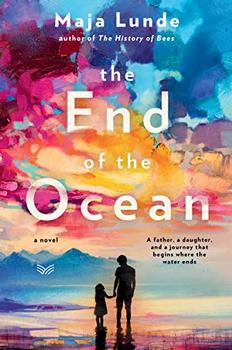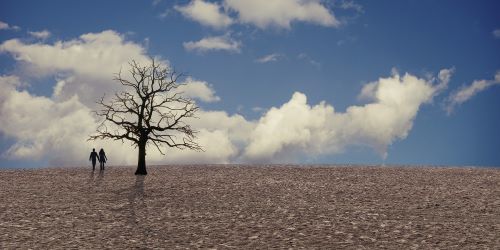Summary | Excerpt | Reviews | Beyond the Book | Read-Alikes | Genres & Themes | Author Bio

This article relates to The End of the Ocean
 Alternating between two storylines set in the recent past and the very near future, Maja Lunde's The End of the Ocean is a chilling reminder of how alarmingly fast the effects of climate change can snowball out of control. In one storyline, set in 2017, Signe recounts the troubling signs already evident in her native Norway: The glaciers are disappearing, the ice on lakes is gone, sea levels are rising, the seasons are disrupted. By 2041, the time period of the book's second storyline, the planet has reached crisis point. Southern Europe is ravaged by drought. Wildfires rage out of control, brought on by the parched conditions. Water nations are at war with drought nations. Masses of people have been displaced.
Alternating between two storylines set in the recent past and the very near future, Maja Lunde's The End of the Ocean is a chilling reminder of how alarmingly fast the effects of climate change can snowball out of control. In one storyline, set in 2017, Signe recounts the troubling signs already evident in her native Norway: The glaciers are disappearing, the ice on lakes is gone, sea levels are rising, the seasons are disrupted. By 2041, the time period of the book's second storyline, the planet has reached crisis point. Southern Europe is ravaged by drought. Wildfires rage out of control, brought on by the parched conditions. Water nations are at war with drought nations. Masses of people have been displaced.
The blighted future described in The End of the Ocean takes place a mere two decades from now. Ominously, this time frame is not unrealistic. According to a 2018 United Nations report, more than 5 billion people around the globe are likely to suffer from critical water shortages by 2050. That's almost two-thirds of the current world population. The World Health Organization estimates that as much as half of the world's population will be living in water-stressed areas by 2025. Many nations, particularly in the Middle East, are already experiencing major problems with water scarcity. Indeed, experts say that long-term climate-related drought in Syria—the country's worst in 900 years—was a contributing factor to the civil unrest that sparked a brutal civil war in 2011.
As greenhouse gas emissions increase and temperatures continue to heat up, weather patterns around the globe are shifting, producing dangerous extremes. Some areas of the planet are getting wetter, experiencing deadly storms and flooding that can flush runoff, pollution and other contaminants into the waterways, affecting access to clean drinking water. Elsewhere, droughts are becoming more frequent and more intense, exacerbated by a confluence of factors related to global warming, including increased temperatures, changing rainfall patterns, and drying soils and vegetation. And as drought conditions worsen, increased stress is put on groundwater supplies—stores of water under the Earth's surface, which many municipalities around the world rely heavily on for drinking water and irrigation.
In parts of California and northern India, groundwater supplies have already reached depletion levels. In many other areas of the world, groundwater levels are dwindling dangerously fast—including in southern Europe, where David and Lou struggle to survive drought and disaster in The End of the Ocean. Hydrologist Inge de Graaf, a researcher at the University of Freiburg in Germany, projects that groundwater supplies in southern Europe will reach depletion levels by the 2040s. By 2050, as many as 1.8 billion people worldwide could live in areas where groundwater stores are nearly or entirely depleted, she warns. In other words, unless we act fast, the fictional future Maja Lunde describes in The End of the Ocean may prove to be all too real.
Dealing with the planet's growing water problem requires concerted action on both a large and a small scale—from more efficient water management practices on the community level to changes in our habits and behaviors on an individual level. In this video, learn how one city in drought-prone Namibia is rising to the challenge.
Filed under Nature and the Environment
![]() This "beyond the book article" relates to The End of the Ocean. It originally ran in February 2020 and has been updated for the
February 2021 paperback edition.
Go to magazine.
This "beyond the book article" relates to The End of the Ocean. It originally ran in February 2020 and has been updated for the
February 2021 paperback edition.
Go to magazine.
A library is thought in cold storage
Click Here to find out who said this, as well as discovering other famous literary quotes!
Your guide toexceptional books
BookBrowse seeks out and recommends the best in contemporary fiction and nonfiction—books that not only engage and entertain but also deepen our understanding of ourselves and the world around us.